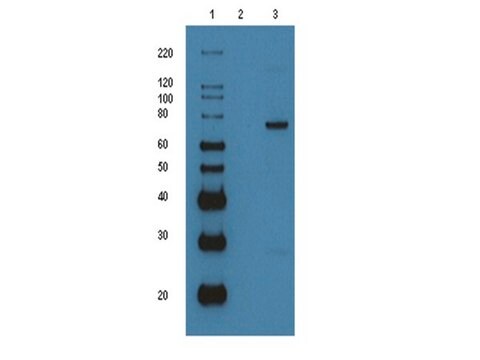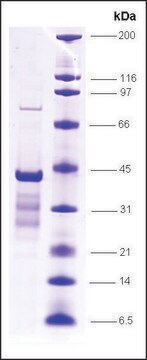P6249
p53 human
recombinant, expressed in E. coli, buffered aqueous glycerol solution
About This Item
Produtos recomendados
fonte biológica
human
Nível de qualidade
recombinante
expressed in E. coli
Ensaio
≥90% (SDS-PAGE)
forma
buffered aqueous glycerol solution
nº de adesão UniProt
aplicação(ões)
genomic analysis
Condições de expedição
wet ice
temperatura de armazenamento
−20°C
Informações sobre genes
human ... TP53(7157)
Procurando produtos similares? Visita Guia de comparação de produtos
Descrição geral
Aplicação
Ações bioquímicas/fisiológicas
propriedades físicas
Código de classe de armazenamento
10 - Combustible liquids
Classe de risco de água (WGK)
WGK 1
Ponto de fulgor (°F)
Not applicable
Ponto de fulgor (°C)
Not applicable
Certificados de análise (COA)
Busque Certificados de análise (COA) digitando o Número do Lote do produto. Os números de lote e remessa podem ser encontrados no rótulo de um produto após a palavra “Lot” ou “Batch”.
Já possui este produto?
Encontre a documentação dos produtos que você adquiriu recentemente na biblioteca de documentos.
Os clientes também visualizaram
Artigos
Huntington's disease (HD) is an autosomal dominant, late-onset neurodegenerative disorder characterized by a selective neuronal cell death in the cortex and striatum leading to cognitive dysfunction, motor impairment and behavioral changes.
We present an article about how proliferating cells require the biosynthesis of structural components for biomass production and for genomic replication.
Nossa equipe de cientistas tem experiência em todas as áreas de pesquisa, incluindo Life Sciences, ciência de materiais, síntese química, cromatografia, química analítica e muitas outras.
Entre em contato com a assistência técnica











